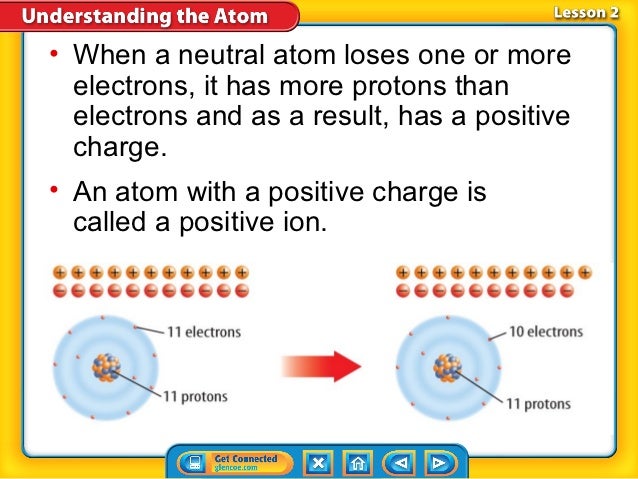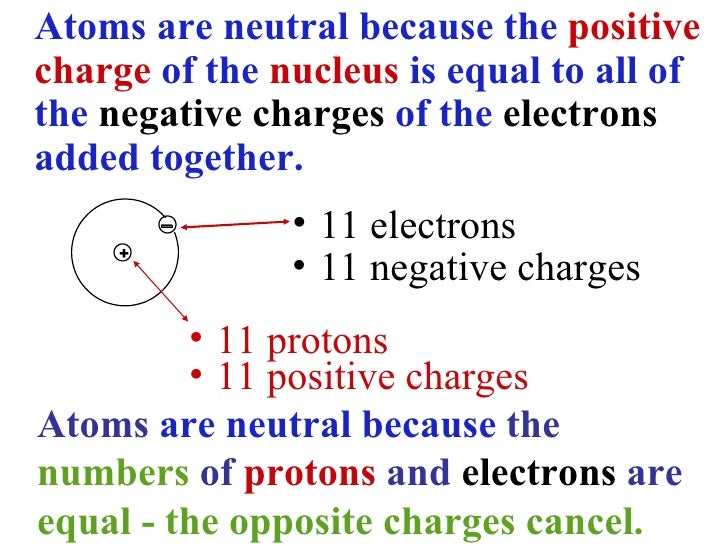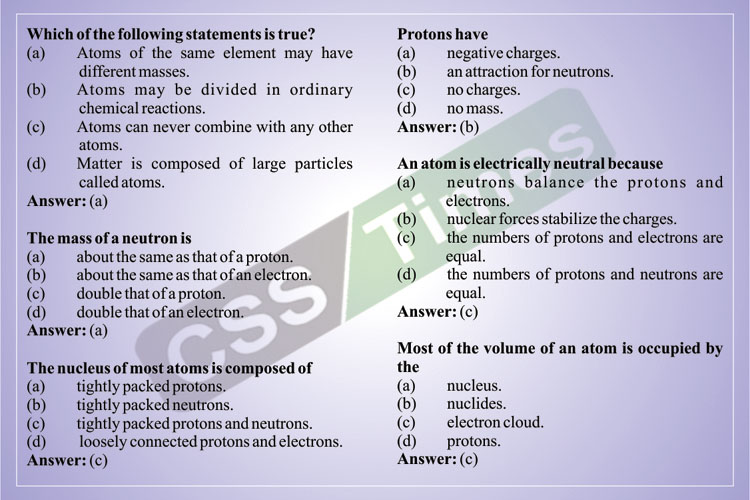Atoms vs. Ions
- Electrically Neutral Atom
- Atoms Of Magnesium Are Neutral Because They Contain The Same Number Of Electrons And


Atoms are neutral; they contain the same number of protons as electrons. By definition,an ion is an electrically charged particle produced by either removing electronsfrom a neutral atom to give a positive ion or adding electrons to a neutralatom to give a negative ion. When an ion is formed, the number of protonsdoes not change.

Neutral atoms can be turned into positively charged ions by removing oneor more electrons. A neutral sodium atom, for example, contains 11 protonsand 11 electrons. By removing an electron from this atom we get a positivelycharged Na+ ion that has a net charge of +1.

Atoms that gain extra electrons become negatively charged. A neutral chlorineatom, for example, contains 17 protons and 17 electrons. By adding one moreelectron we get a negatively charged Cl- ion with a net charge of -1.
Electrically Neutral Atom
It has the same number of protons and electrons. Because protons have got positive charges while the electrons have got negative charges, so if their amount is the same, the atom will be a neutral. Atoms are neutral; they contain the same number of protons as electrons. An ionis an electrically charged particle produced by either removing electrons from a neutral atom to give a positive ion or adding electrons to a neutral atom to give a negative ion. When an ion is formed, the number of protons.

Atoms Of Magnesium Are Neutral Because They Contain The Same Number Of Electrons And
The gain or loss of electrons by an atom to form negative or positive ionshas an enormous impact on the chemical and physical properties of the atom.Sodium metal, for example, which consists of neutral sodium atoms, burstsinto flame when it comes in contact with water. Neutral chlorine atoms instantlycombine to form Cl2 molecules, which are so reactive that entire communities are evacuatedwhen trains carrying chlorine gas derail. Positively charged Na+ and negatively charged Cl- ions are so unreactive that we can safely take them into our bodies wheneverwe salt our food.
